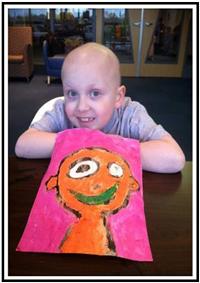What Local Families Need to Know About Measles
By Timothy R. Peters, MD, associate professor of pediatrics, Brenner Children’s Hospital
You’ve probably already read about the measles outbreaks across the country, most notably in California. This is, of course, disconcerting. Measles is a potentially deadly disease that had previously been eliminated in the United States. The news isn’t all bad, though. Measles is preventable—and fortunately, hasn’t yet made its way to our region. In case an outbreak does occur locally, however, here’s what you need to know:
Vaccination is your best defense. The measles vaccine—which is delivered through the MMR (mumps, measles, rubella) shot—doesn’t offer perfect protection against measles, but it still does an excellent job. If you look at measles cases from 2014, you’ll notice that 93 percent of those were in people who were unvaccinated or unsure if they were vaccinated. Statistics like these show us that measles cases occur overwhelmingly in unvaccinated people.
The first dose of the MMR vaccine is recommended for children between 12 months and 15 months of age. The second dose should be given to the child when he or she is between 4 years and 6 years of age. Because children under age 1 are not yet protected from the disease, it’s important that those who are around young children get vaccinated. Rest assured that this vaccine is both highly effective and extremely safe.
Measles is a highly contagious and potentially fatal virus. Measles used to be a fairly common childhood illness. But thanks to the widespread use of the measles vaccine, rates of the disease have dropped dramatically since the 1960s. Because of this, fewer people are aware of what a dangerous illness it is—especially for children under the age of 5.
Measles is transmitted through coughing and sneezing. If your child is unvaccinated and around someone with the disease, there’s a 90 percent chance that he or she will catch it. Not only is measles an uncomfortable illness, it can lead to potentially deadly complications, such as pneumonia and encephalitis. Pneumonia is the most common cause of death in children with measles. However, encephalitis can be severe, causing brain swelling, seizures, brain damage and, sometimes, death. It is because death is a potential consequence of measles that we emphasize vaccination so heavily. Before the vaccine was developed, around 500 children in the United States died from the disease each year.
Measles symptoms show up many days after infection. It usually takes measles symptoms about 14 days to show up after an adult or child is infected with the illness. These symptoms typically include high fever, cough, runny nose and red, watery eyes. About two to three days before these symptoms show up, an infected person can develop tiny spots inside his or her mouth.
Several days after the fever starts, the measles rash begins. The red bumps begin around the hairline and then spread down onto the trunk, arms, legs and feet. The development of the rash has been compared to paint being poured on your head then dripping down the body.
If you or your child is exposed to the measles, call your doctor right away. There are no antivirals for measles; care is strictly supportive. However, if you get the measles shot within the first 72 hours of exposure to the virus, the vaccine may provide defense against (or modification of) the disease. Of course, at this stage, protection varies from person to person; so don’t count on a last-minute vaccination as a foolproof preventive measure.
It’s also important to stay away from any person or family known to have measles. In some parts of the country, it has become popular to intentionally expose children to other children with the disease. This is a bad idea. Never forget that death is a potential outcome of measles.
You can protect yourself, your child and your community from an outbreak. Fortunately, our community is pretty well vaccinated, which lowers our risk of an outbreak. When large numbers of people choose to vaccinate, we achieve community protection, also known as “herd immunity.” So the best way to protect the most vulnerable among us is to get vaccinated.
However, if you and your child are currently unvaccinated, it’s a good idea to do so before an outbreak hits—or before traveling to an area with an existing outbreak. Evidence shows that the vaccine offers some protection right away and full protection within a week.
In the event of a measles outbreak, pay attention to the advice and instructions given by public health officials. They are very alert and will keep the public informed. If you want to keep up with the measles outbreak, check the CDC’s website.
Sponsored by Brenner Children’s Hospital







